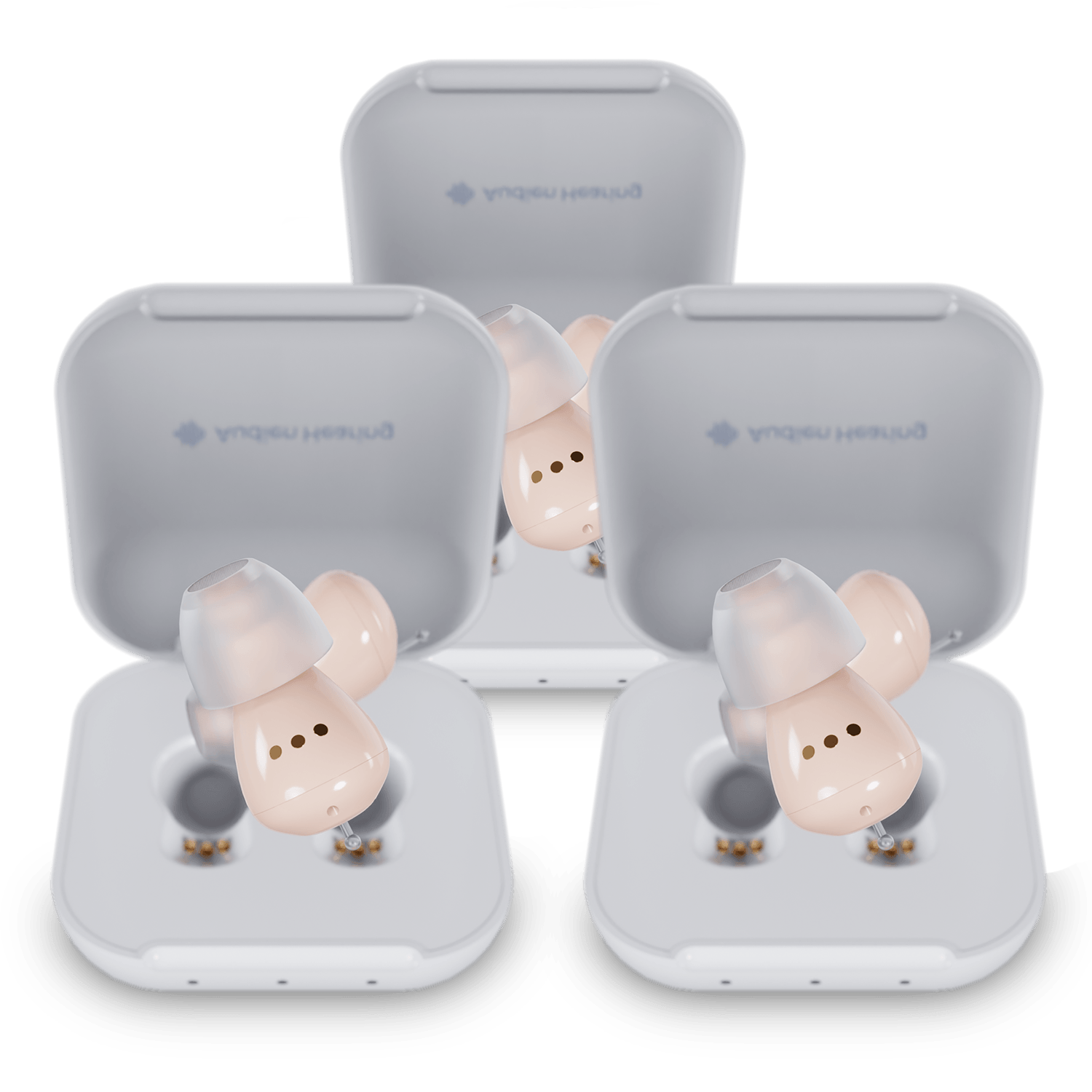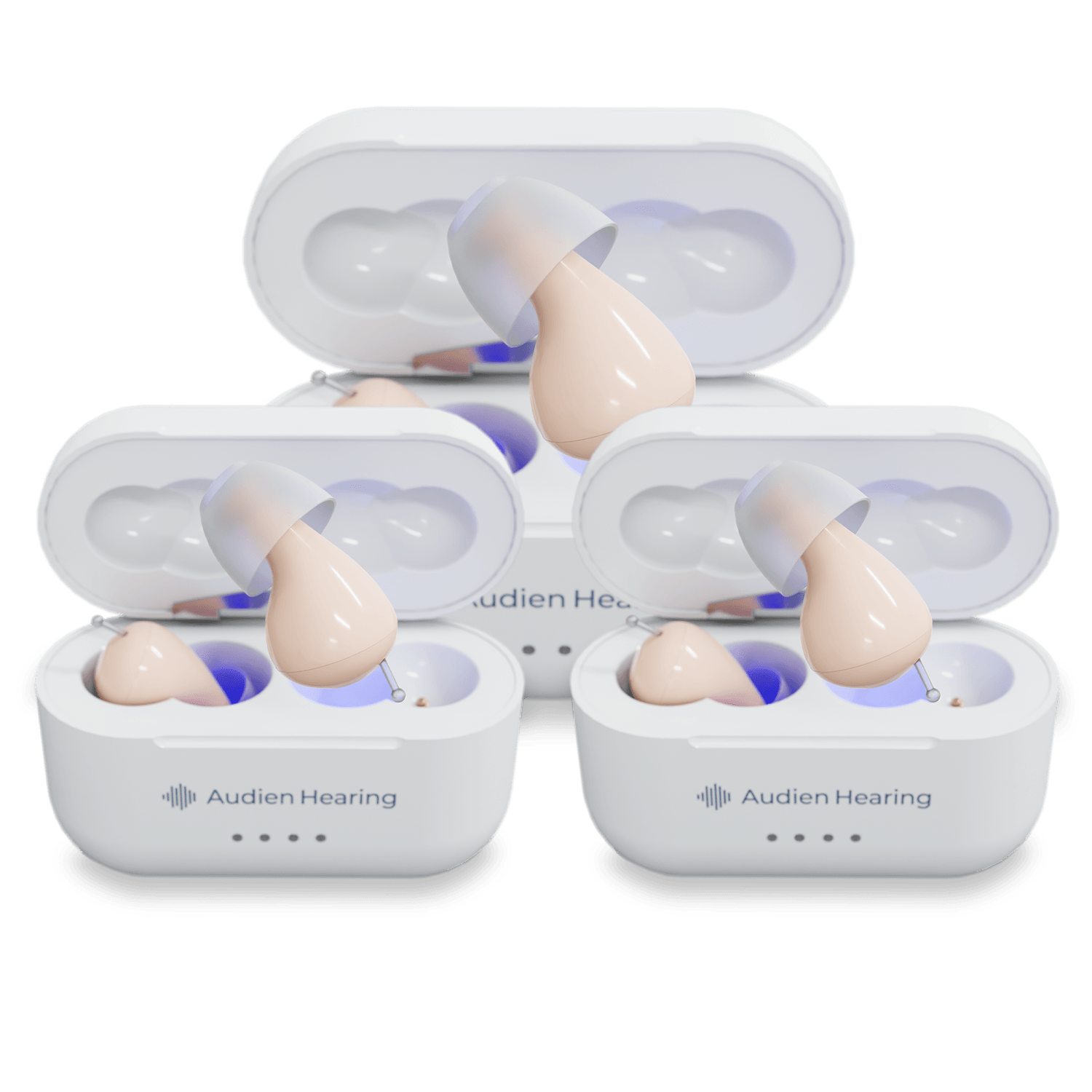Hearing aids are small electronic devices that increase the volume of sounds so those with hearing loss can continue to listen, communicate and function better. Finding the best hearing aids depends on your level of hearing, condition and various other factors.
The History of Hearing Aids

Hearing aids have three essential components: the speaker, microphone and amplifier. To work, the microphone picks up sound waves that it converts into electrical signals and sends to the amplifier. The amplifier increases the signal's power and sends the sound through a speaker and into the ear.
Early Hearing Aid Technology
In the 17th century, people used an ear trumpet. Ear trumpets were tubular devices that funneled soundwaves into the ear. People manufactured ear trumpets using animal horns, snail shells, wood and sometimes sheet metal or silver. A specialist would create a personalized conical instrument for each particular client.
In 1898, the invention of Aukophone introduced the first portable hearing aid. It used a carbon transmitter and an electric current to turn a weak signal into a stronger one. The early hearing aid had a separate amplifier, headphones, battery and microphone. Very few people had access to the Akouphone because it was clunky, hard to use and came with a high price point. These devices hardly compare to the best hearing aids nowadays.
Vacuum Tube Hearing Aids
A Naval engineer named Earl Hanson patented a vacuum-tube hearing aid called the Vactuphone in 1920. The Vactuphone worked by using a telephone transmitter to convert speech to electric signals. Next, the electric signals then amplified through the receiver.
Competition led to the development of smaller hearing aids throughout the 1930s. The smaller hearing aids began to gain popularity after 1936 when the technology became wearable.
Transistor Hearing Aids
In 1948, the transistor hearing aids replaced vacuum tubes. People preferred transistor hearing aids because they did not require as much battery power and produced less distortion. Likewise, the hearing aids created less heat. Unfortunately, a person's body heat could cause the hearing aid to stop functioning. The devices would die within a few weeks because of dampness and heat. Developers created a coating to protect the silicon transistor.
Microprocessor Hearing Aids
In 1970, manufacturers created the microprocessor hearing aid, a multi-channel amplitude compression device that separated audio signals into frequency bands. The microprocessor could selectively amplify some sounds more while amplifying others less.
Digital Hearing Aids
In 1987, digital hearing aids hit the market but did not have a lot of commercial success. Instead, their introduction launched a race to create viable digital hearing aids that could have commercial success. The developments in hearing aid technology began to move at a rapid pace. The digital hearing aids included hybrid instruments, filters, amplifiers and limiters that wearers could control digitally.
High Tech Hearing Aids
Modern hearing aids have come a long way from the bulky devices of the past. Today’s models include advanced features like digital sound processing, directional microphones, background noise reduction, feedback suppression, and even Bluetooth connectivity. Some devices automatically adjust to different listening environments, helping users hear more clearly whether they’re at home, in a meeting, or out at a restaurant.
From prescription to over-the-counter (OTC) hearing aids, the goal is the same: to make daily communication easier, reduce listening fatigue, and support overall well-being. The right technology depends on the user’s hearing loss severity, lifestyle, and personal preferences. For many people with mild to moderate hearing loss, OTC hearing aids can provide meaningful improvement—especially when selected carefully and used consistently.
Medical Consultation Before Obtaining Hearing Aids

Before choosing hearing aids, it's always recommended to have your hearing evaluated by a licensed professional such as an audiologist. A comprehensive hearing exam helps determine the type and degree of hearing loss and can identify any underlying medical conditions that may require treatment beyond amplification.
According to FDA guidelines, medical clearance is no longer mandatory for adults purchasing over-the-counter (OTC) hearing aids. However, it’s still important to seek medical attention first if you experience any of the following: sudden or rapidly worsening hearing loss, pain or discomfort in the ear, drainage (including blood, pus, or fluid), dizziness or balance issues, tinnitus in only one ear, or a history of ear infections or surgery.
We understand that not everyone has access to in-person care due to insurance coverage, mobility issues, or out-of-pocket costs. If you’re unable to see a provider right away, at-home hearing tests and OTC hearing aids offer a practical way to begin your hearing journey. However, professional hearing tests should still be part of your long-term care whenever possible—ideally done annually—to monitor for changes and ensure the most appropriate solutions are in place.
That said, for many people, once they understand their needs, OTC hearing aids are an easy and effective solution—offering the clarity, comfort, and loudness needed for daily communication and safety, without requiring frequent visits to an audiologist. It’s a practical and empowering fit for those with mild to moderate hearing loss.
6 Qualities of the Best Hearing Aids

The ideal hearing aid for your condition depends on your preferences and the features offered in different models. There are a few essential features, however, that you should not go without.
Background Noise Limitation
One of the biggest challenges in hearing aid technology is distinguishing speech from background noise. Most modern digital hearing aids are equipped with background noise reduction and feedback suppression features. These systems use advanced microprocessors to identify and reduce low-frequency sounds—such as traffic, air conditioning, or general crowd noise—while enhancing the mid- and high-frequency sounds most important for understanding speech.
This helps create a clearer, more comfortable listening experience, particularly in noisy environments like restaurants or group gatherings.
Programmability
A key benefit of digital hearing aids—especially compared to basic amplifiers—is their ability to be customized. While personal sound amplifiers boost all sounds equally, hearing aids are designed to prioritize speech clarity and adjust amplification based on your unique hearing loss and the environment you’re in.
Many over-the-counter (OTC) hearing aids today, including Audien’s Ion Pro, offer features that let you adjust your experience without needing professional programming. For example, you can select from preset hearing profiles tailored to common hearing patterns and switch between listening modes for different situations (like quiet conversations or busy public places).
This level of programmability makes it easier for users to stay engaged in conversations and comfortably navigate a variety of listening environments on their own terms.
Sound Targeting
Some hearing aids have directionality. These aids contain two or more microphones; each is installed at a specific distance from one another within the device. The contrast in the time it takes sound to reach the microphone determines how the aid will react to the sound. The hearing aids can target specific sound sources.
Telecoils
Telecoils are copper coils that manufacturers integrate into the hearing aid. Telecoils allow users to talk on the phone without worrying about feedback. The aids connect to a hearing loop system. For example, if you go to a movie theater with a hearing loop system, you will hear the sound directly in your hearing aid.
Different Styles
There are various styles and sizes to suit a person's preference. If you prefer a small hearing aid, you may have luck with the Audien Atom Pro. Some hearing aids go behind the ear, whereas others go into the ear canal. When looking at hearing aid styles, try to balance ease of use, functionality, appearance and cost.
Wireless Capability
Some hearing aids are compatible with your smart device. You can connect your hearing aid wirelessly to your smartphone, for instance. The sound travels directly into your ear if you want to stream music or telephone calls. You may also be able to use your phone as a remote control for your hearing aid.
Finding the Best Hearing Aids for Your Situation
The best hearing aids depend on your level of hearing loss and your preferences. To find hearing aids that fit your lifestyle, visit us at Audien Hearing. We offer high-quality hearing aid solutions, including the Atom Pro.
Sources:
https://hearinghealthfoundation.org/blogs/hearing-aid-history-ear-trumpets-european-royalty-earbuds
https://www.nidcd.nih.gov/health/hearing-aids
https://heartlandhearingiowa.com/blog/6-things-to-look-for-when-buying-hearing-aids













